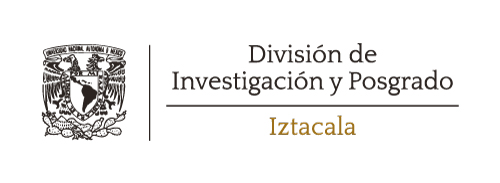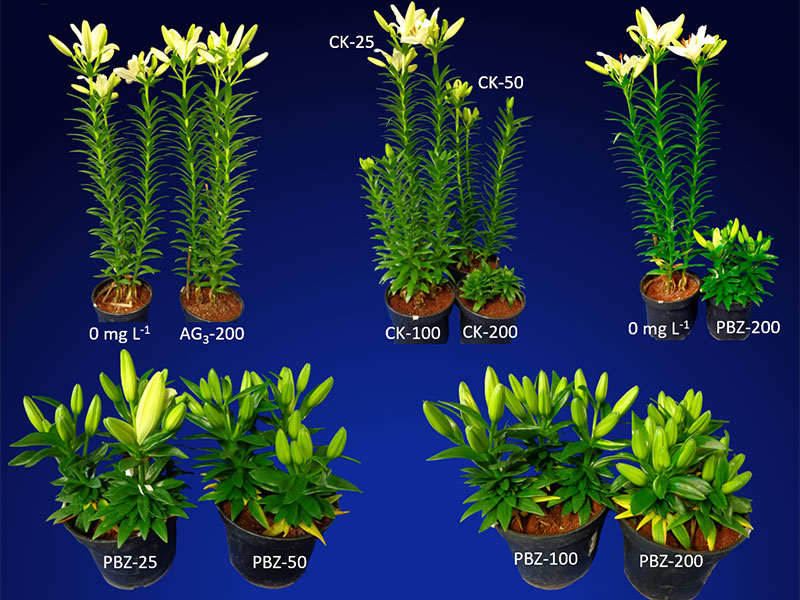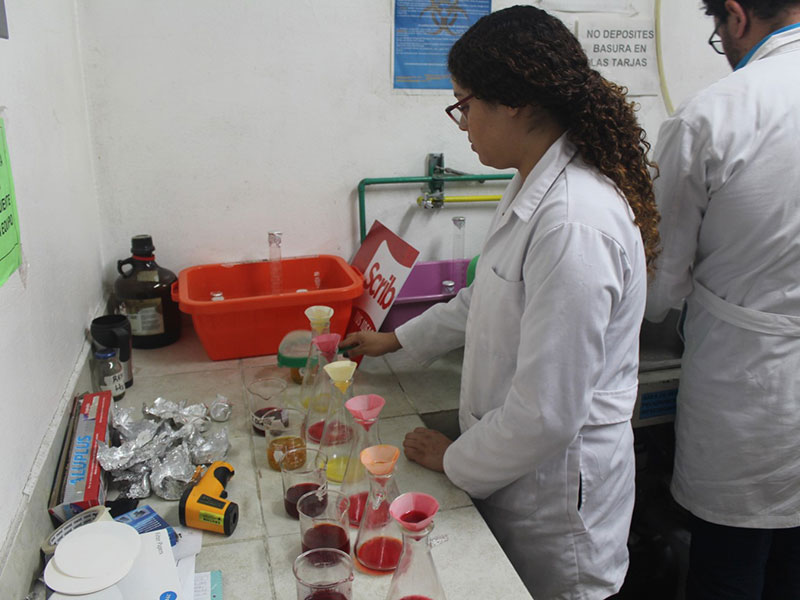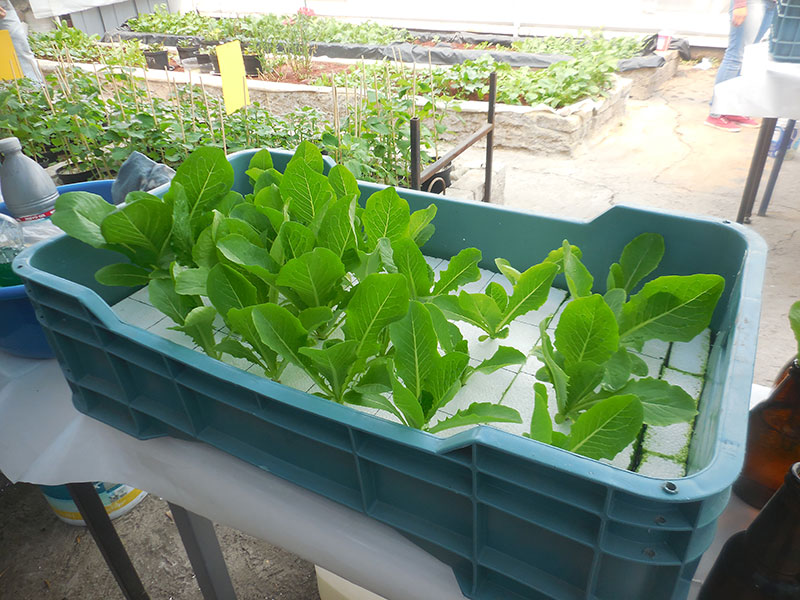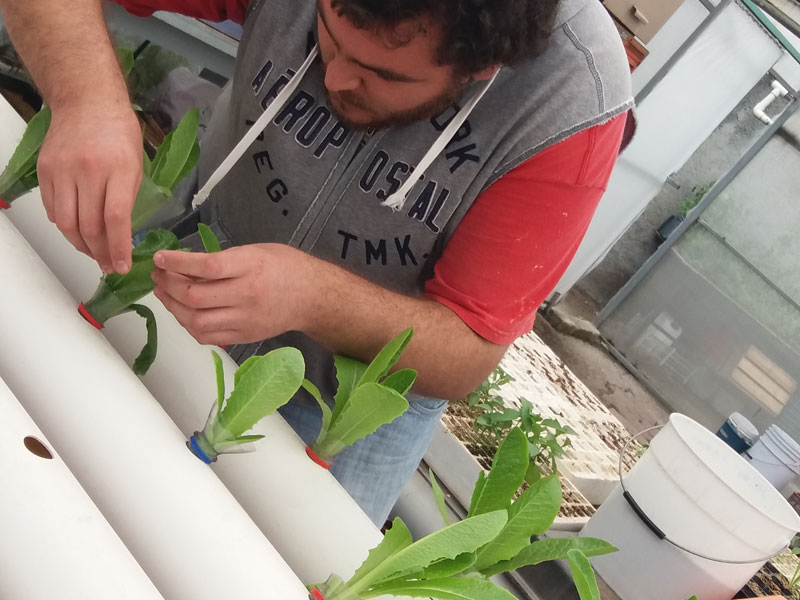
| Location within campus: | Laboratory; 9. Unidad de Morfología y Función |
| Phone: | 55 56231257 |
| Head of Laboratory: | M. Sc. Alberto Arriaga Frías Full Professor ixbe@unam.mx |
| Researchers affiliated to the laboratory: | Dr. Manuel Mandujano Piña manuelm@unam.mx Dr. Gumercindo Honorato de la Cruz Guzmán moashi@unam.mx |
| Technicians affiliated to the laboratory: | Dr. Gumercindo Honorato de la Cruz Guzmán moashi@unam.mx |
| Research lines per researcher: | Alberto Arriaga Frías: The use of colorants as indicators of water flow in flower stems. Manuel Mandujano Piña: Evaluation of biochemical variables associated with the senescence process in flowers and fruits. Gumercindo Honorato de la Cruz Guzmán: Plant growth regulators (PGRs) and other chemical compounds in the cultivation of vegetables and ornamentals fertirrigated with nutrient solution. |

Harvesting flower stalks involves breaking a water flow continuum, exposure to postharvest handling (dry or wet) and the application of preservatives such as aluminum sulfate, citric acid, and ethylene inhibitors for distribution to the consumer. All this in order to maintain the hydration associated with the ornamental value and life in the vase. The use of dyes that stain the vascular system of the stems and flower buds represents a way to visualize their hydration speed. Traditionally, flowers and fruits are classified as climacteric or non-climacteric. Both experience senescence, which is accompanied by a decrease in protein content, an increase in protease activity, and for the climacteric, the increase in the respiration rate induced by ethylene becomes evident, which causes changes that must be evaluated from the biochemical and physiological point of view.
Gibberellic acid is used to accelerate seed germination and lengthen the internodes of flower stems, auxins and cytokinins to promote rooting and delay senescence, and paclobutrazol to reduce the length of flower stems and produce pot plants. In addition, during the germination of ornamental seeds, models of cardinal temperatures and potential distribution can be built based on climate change scenarios.

De-La-Cruz-Guzmán G. H., Arriaga-Frías A.,
Mandujano-Piña M., Aguilar-Rodríguez S. (2019). Anatomía del tallo de alstroemeria cv. Rebecca y su relación con la vida de florero. Revista Bio Ciencias 6e568. https://doi.org/10.15741/revbio.06.01.24
De La Cruz-Guzman G.H., Arévalo-Galarza M. L., Peña-Valdivia C.B., Lao-Arenas M.T., Castillo-Gonzalez A.M., Colinas-León T., Mandujano-Piña M. (2018). Efecto del manejo seco y húmedo en la calidad postcosecha de tres cultivares de Rosa hybrida. Agrociencia 52(8): 1137-1148
García-Caparrós, González-Salmerón O., Pérez-Saiz M., Calatrava-Rubio R., Lao-Arenas T., De La Cruz-Guzmán G. (2018). Types of Shelter and Covering
Materials Influencing Growth, Pigment, and Nutrient Concentrations
of Baby Rubber Plants (Peperomia obtusifolia). HORTSCIENCE 53(10):1434-1440. https://doi.org/10.21273/HORTSCI13315-18

| Entry profile of potential thesis students: | Students who have passed the symbol of plant physiology, who preferably are or have taken elective subjects related to plants and who state in writing, in a page, their development interests in this area in order to determine their compatibility with the research topics of the laboratory. It is necessary that they have a basic knowledge of chemistry about the different types of solutions and a readiness to read articles in English. |
| Service Social Data: | Hydroponic crops and sprout production as food alternatives for self-consumption (Key: 2020-12 / 63-72). The provider may choose: Sprouts. 1. Preparation of lentil and mung bean sprouts. 2. Preparation of a presentation and triptych on its preparation and nutritional advantages. 3. Exposure to members of the community and / or high school students. Hydroponics. 1. Acquire training for the implementation of hydroponic systems for home vegetable production. 2. Presentation to members of the community and / or high school students near the Faculty. |
